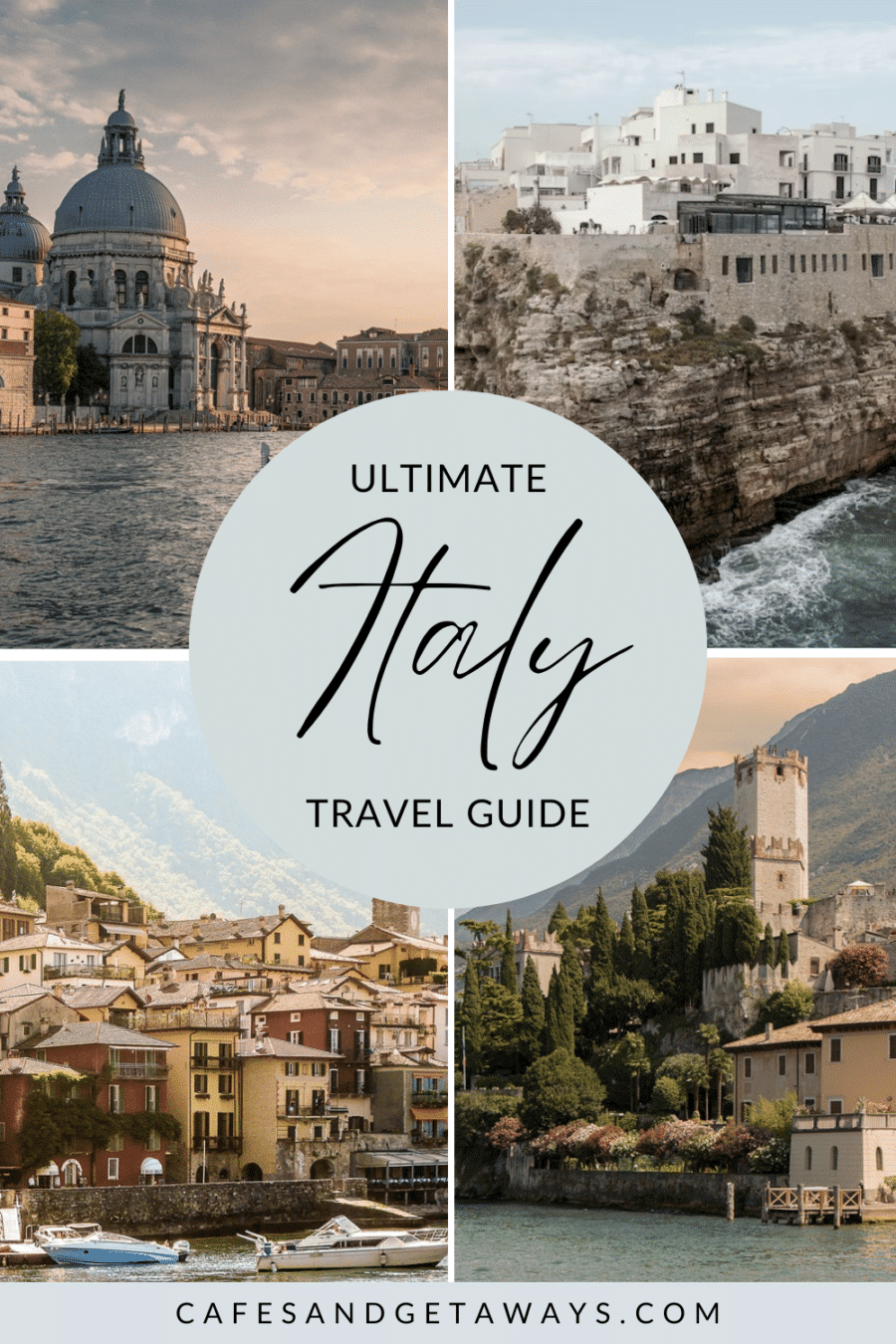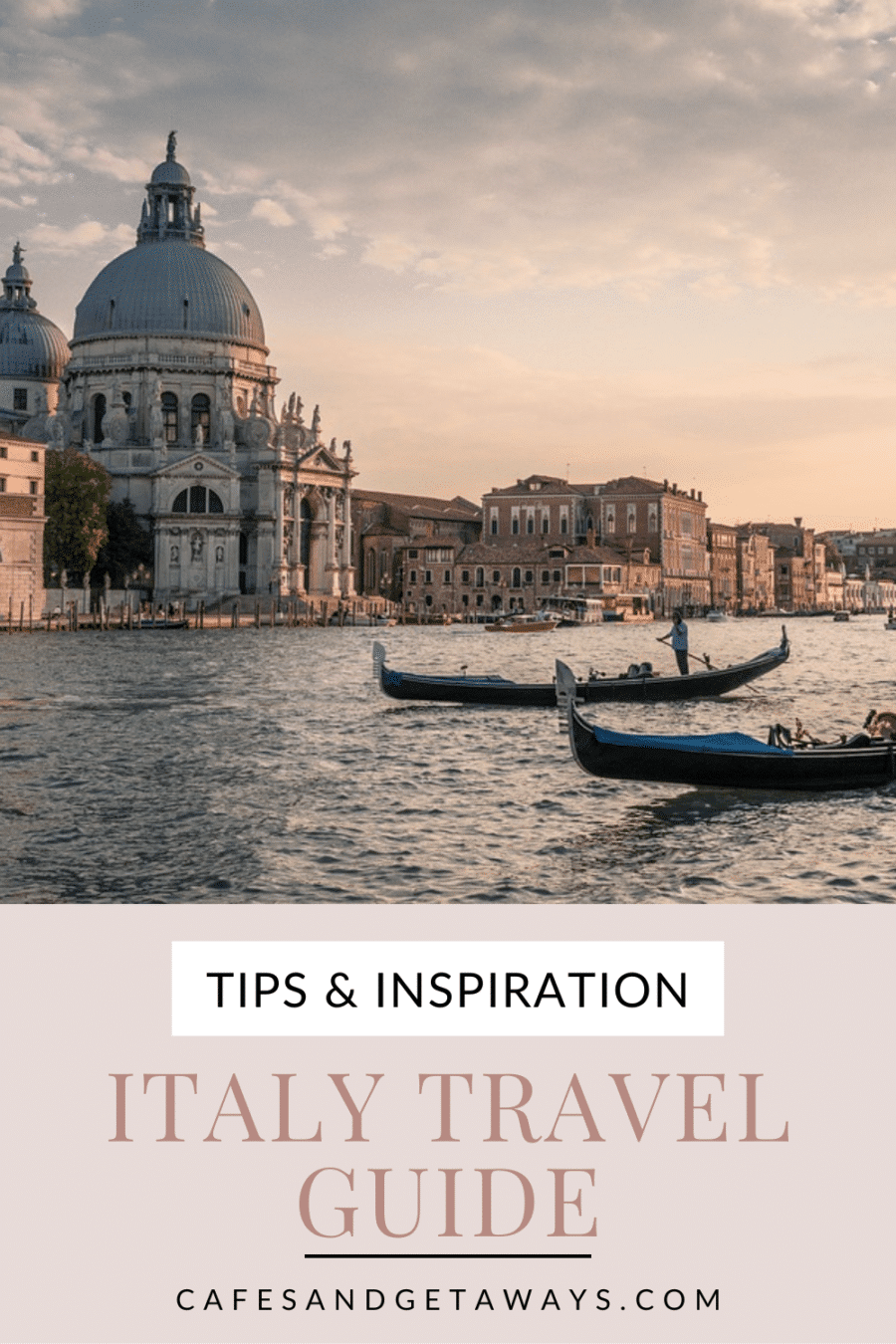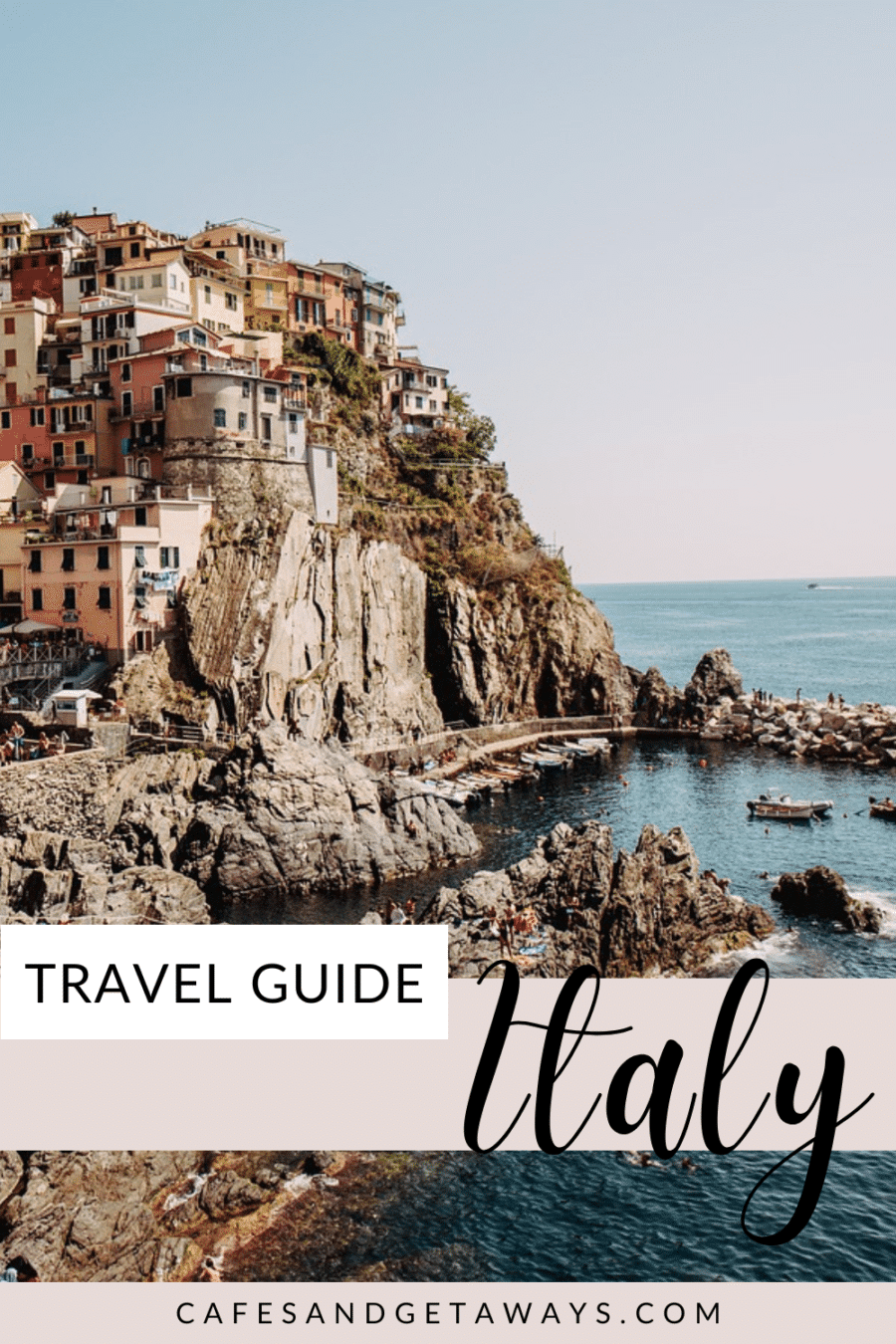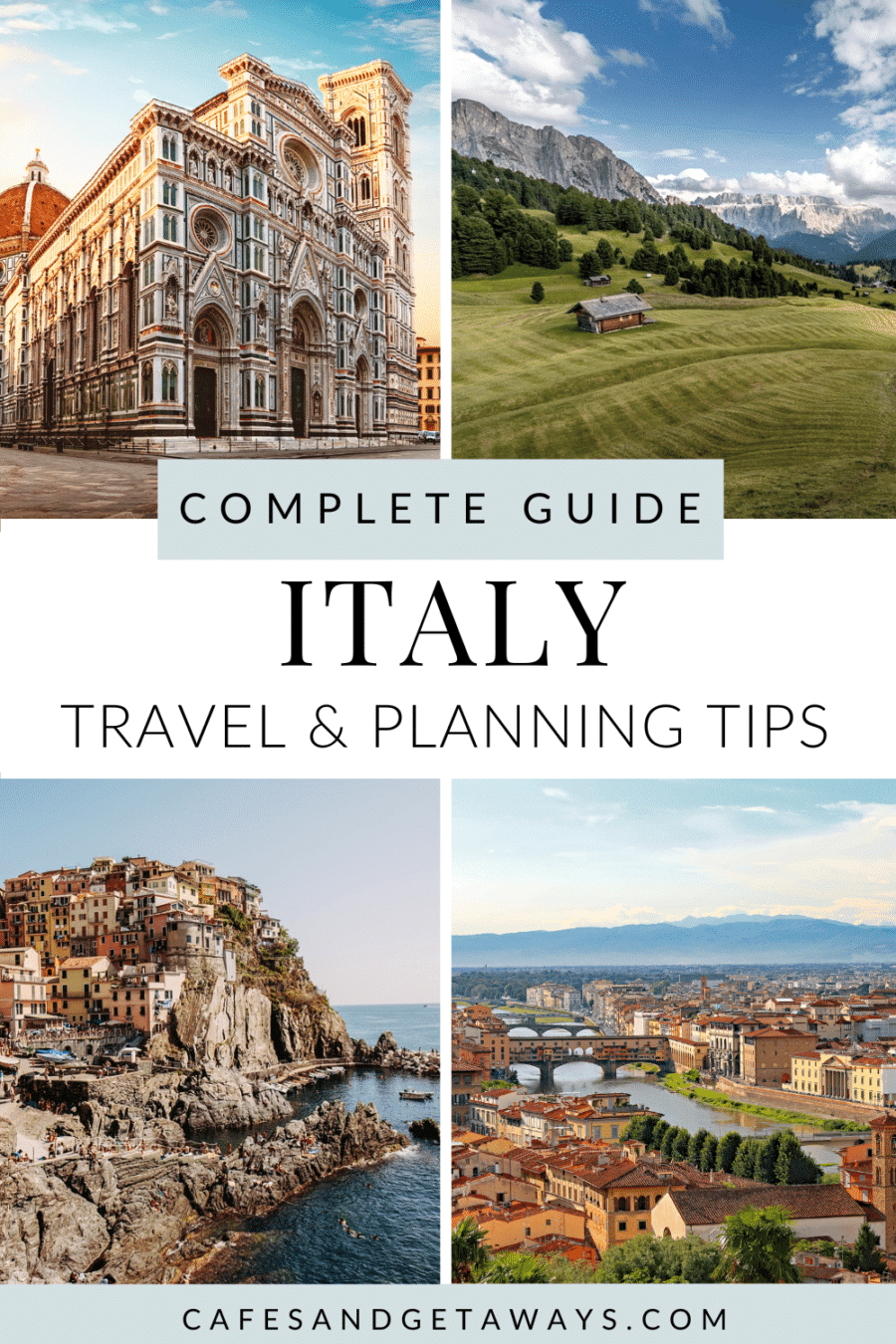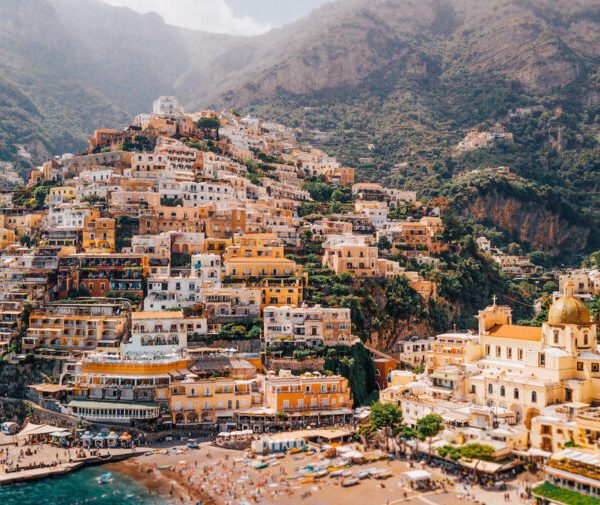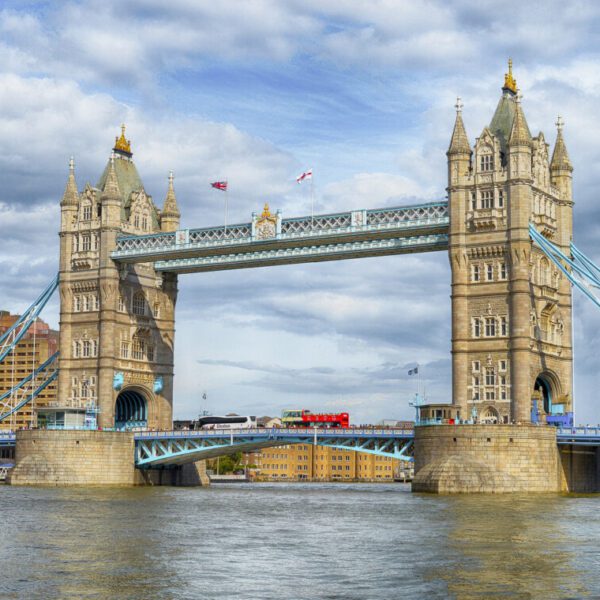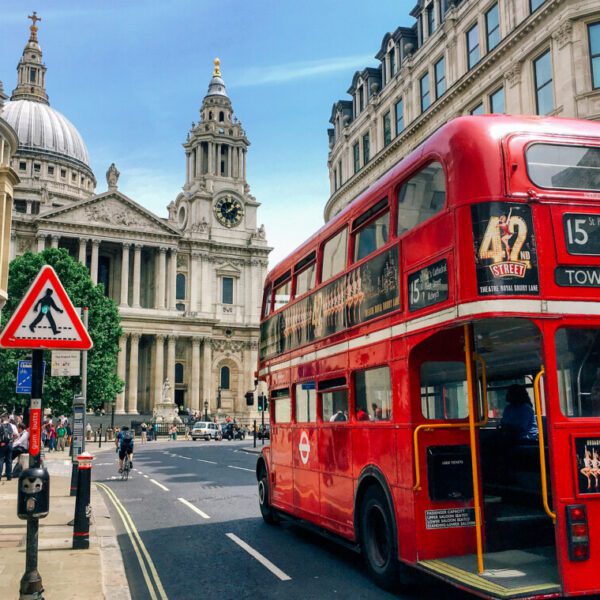Last updated on January 25th, 2023
Italy is one of the most visited countries in Europe, and I recommend that everyone should go. With more than half my family still living in Italy, it is also near and dear to me. Italy is broken up into different regions, which all offer something special. From the Mediterranean villages to the historic cities there is something here for everyone.
With so many magical places to visit here, it is hard to narrow down exactly where you should start. As of now, Florence is my favorite city and Lake Como is my favorite quiet getaway. You also have the Amalfi Coast and Tuscan Countryside that should be on your Italy bucket list of destinations to explore.
No matter where you decide to travel within Italy, many of the tips will be the same. I have put together an all-around travel guide to Italy that will help you when traveling to any part of this beautiful country.
Best Time to Visit Italy
The best time to visit is April, May, September, and October. These are right before and after the peak tourist season. The weather will still be warm during these months, but attractions will be less crowded and prices will be more reasonable.
The peak season is between June and August. During these summer months, Italy is packed with tourists. On our last trip to Italy, we traveled from the end of June to the middle of July. Even though we knew the crowds were going to be crazy, we had planned our trip around visiting the Palio in Siena. The larger cities like Rome and Florence were very busy, but mostly around the attractions. Once you got further away from them, it really wasn’t that bad. The weather however was very hot! Temperatures were in the high 80s and low 90s, but they can climb even higher. We made great use out of the public water fountains to help us stay cool.
The cheapest time to visit is the off-season, between about November to March. Depending on where you are visiting, such as Northern Italy, it will get quite cold. However, keep in mind that many places will have an altered schedule for tourist attractions and some may be closed altogether. This is a great time if you are interested in visiting all the Christmas markets!
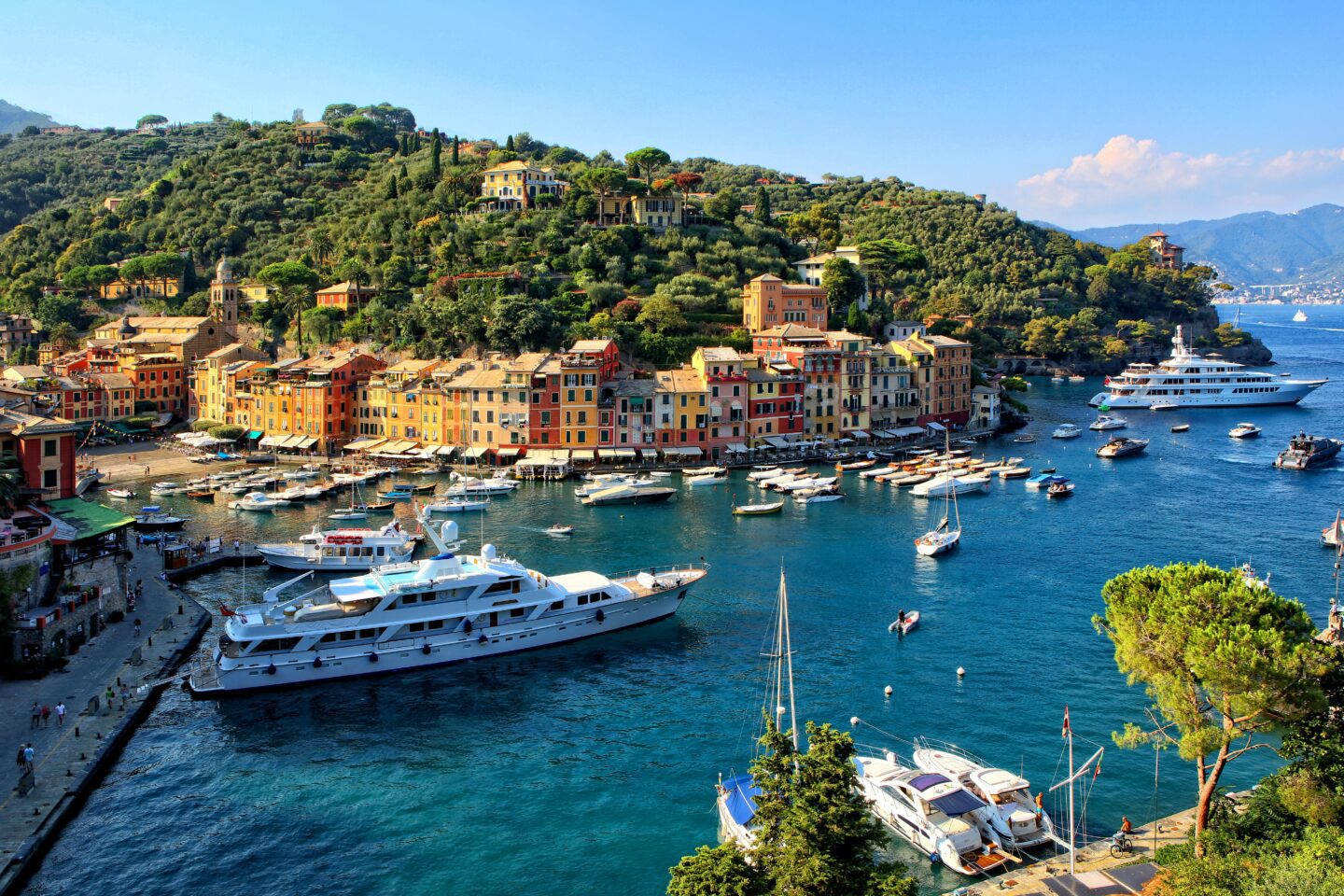
Cost to Travel to Italy
Accommodations
There are several types of options available throughout Italy. Hotels are the most popular choice due to the range of prices and amenities.
A budget hotel is going to cost €120 or less, with mid-range hotels costing between €120-200. Luxury hotels range in price depending on location. You can find luxury hotels in the low €200 range and all the way up to the €500 range depending on what you are looking for.
Airbnb or Vacation rentals also range widely in cost and location. Small city apartments can sometimes be much cheaper than hotels, but you have to factor in cleaning and service fees.
Food
The typical sit-down meal is going to cost between €15-35 per person. Restaurants near tourist attractions tend to be more expensive due to their location. A cocktail or glass of wine is between €5-10.
To save some money, ask for their house wine. If you want to save some money, street food can cost as little as €5. There are many fresh markets and street vendors where you can get quick bites to eat at low costs.
Entertainment
Depending on where you go, you will want to visit different attractions and join tour groups. Also, purchasing souvenirs, snacks, and tipping tour guides are additional costs.
On average, I would plan to spend up to €50 per day in larger cities like Rome and Florence. Purchasing city passes like the Roma Pass or Firenze Card will help save some money on attractions.
Average Daily Budget
On average, plan on having around €150-200 of spending money each day. This should be enough to cover attractions, food and drinks, transportation, and miscellaneous expenses. It is always better to overestimate than not have enough!
How to get Around Italy
Ride the Train
The main way we traveled from city to city was by Train. Trains are in my opinion a little bit easier and quicker to travel on. There are several different online resources to book your tickets in advance and look up time schedules. The average cost of a ticket is around €50 for a faster train, but it all depends on the distance and type of train you plan on using. I was all about spending a few extra Euros on the fast trains like Eurostar. ItaliaRail is the website I used to research everything. The site is easy to use and allows you to purchase tickets from multiple companies.
Public Transportation
Subways and buses are a great way to get around within the cities. From my experience, each town or city has its own transportation companies that stay within the area. Tickets cost only €1-2, making this the most affordable form of transportation.
Take the Bus
If you want to take a bus between cities, companies like Omio offer coach buses for that. We took a bus from Florence to Siena as that got us closer to the medieval city. These buses normally are located at or near the train stations, and just like with the train, you can purchase tickets online or at the station. On average the cost of a ticket is around €10 for a 2-3 hour trip. For trips longer than 3 hours, plan on spending closer to €25-30. It is less expensive than taking the train, however much slower. The main reason we took the bus to Siena was that it got us closer to the city center than the train. Besides that, we took the train everywhere.
Fly
There are lots of little airlines that will take you from one city to the next. EasyJet and Ryanair are two great budget airlines that will take you all throughout Europe. Planes are a wonderful option if you are traveling further distances and don’t want to waste an entire day traveling. We flew from Milan to Paris for less than $200 per person.
TRAVEL TIP: With most budget airlines, luggage is always an extra expense.
Take the Ferry
If you are looking to travel from the mainland to islands like Capri or Sardinia, you may want to look into taking a ferry. Unlike with train tickets, I would go ahead and book your ferry in advance. Normally you will also have the option between the high-speed ferry and regular ferry with the high speed being a little more. Many ferries also have the option to transport cars for an extra fee.
Rent a Car
In order to rent a car, you will have to have an International Driving Permit. Car rental averages about €30 per day, with automatic cars being a little more expensive. Car rentals are a great idea if you plan on traveling to many different destinations, however, I do not recommend driving within the cities. Cities like Rome are very challenging to drive in and have a lot of different rules than we are used to. There is also limited parking in the cities and drivers are extremely aggressive. If you are looking to travel through the countryside, rentals are a great option!
TRAVEL TIP: If you are looking to rent a car in one location and drop it off at another, there is usually an added expense for this.
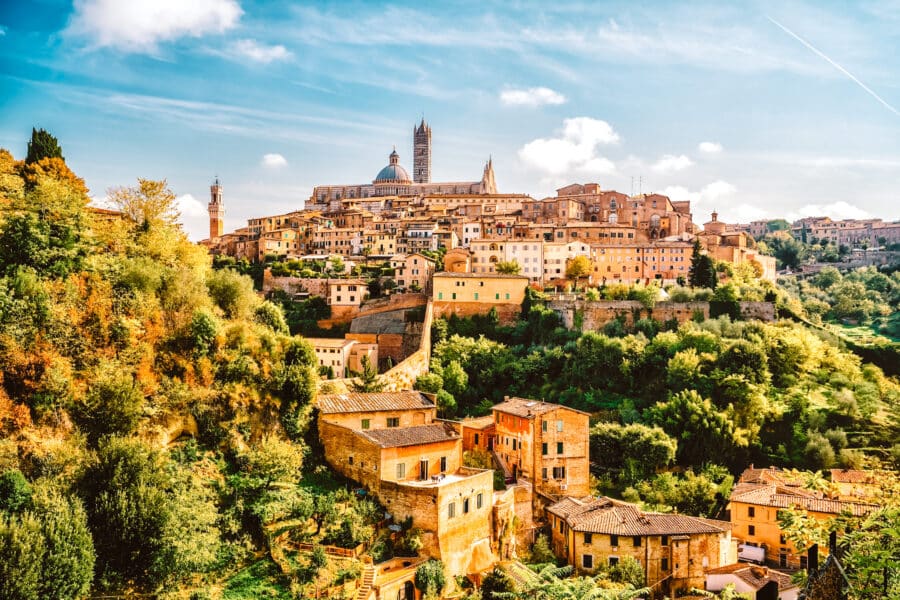
What to Pack for Italy
- Power Adaptor: You will need a universal adaptor for hairdryers, phone chargers, and other electrical tools. The plugs in Italy are C, F, and L. Many hotels will already have the chargers for you, but not all did. Our adapter came in extremely handy.
- Comfortable Shoes: The main way you will get around is on foot. Make sure to pack several pairs of running shoes or other comfortable shoes with you.
- Reusable Water Bottle: Between walking everywhere and the heat (if you travel during the summer), you will want to stay hydrated. The nice thing about most Italian cities is that they have free public water fountains where you can fill up. The water is extremely fresh and clean!
- Portable Charger: Between taking photos and navigating the city using your GPS you will want to have a portable charger. They are extremely small and will quickly recharge your phone on the go.
- Shawl: You will have to cover up your shoulders before heading into any churches in Italy. Shawls are an easy way to quickly cover-up. It is much easier than having to plan your outfit around these visits.
- Small Umbrella: Just in case it rains, you want to be prepared.
- Crossbody bag: There are lots of pick-pockets around so having a crossbody bag with a zipper is always a good idea.
- Italian Phrasebook or Translator App: It is always a good idea to understand some key phrases no matter where you travel. I promise the locals will appreciate the effort!
- A Small Amount of Cash: The Euro is used all through Italy. I always recommend having some Euros on you. Depending on where you visit, some places will not take credit cards. If you are in the city this won’t be a problem!
- Camera: A must-have to take pictures of all the wonderful places you go.
- Packing Cubes: These make packing so much easier and more organized.
- Clothing: What you pack will honestly depend on the weather. I would recommend having a mix of clothes. Even if you are traveling in the summer, I always bring a warm outfit just in case.
Business Hours of Operation
Italians love their afternoon siestas. In the afternoon, many restaurants and businesses will close for a couple of hours in order for people to go home and have lunch and take a nap! The opening hours also aren’t standard, the business closes pretty much when they like.
When planning your trip it is very important to research this beforehand. Some restaurants and stores may close from 1 pm – 3 pm, while others may be closed until 5 pm. It just depends!
Another thing to look out for is the days that places are closed, especially tourist attractions. Many places will be closed for holiday weekends, and throughout the week. For example, most museums in Rome are closed on Mondays. This is especially important when you are planning your itinerary so you don’t accidentally miss out on seeing something.
Dress Code
There is a dress code for entering churches and other holy places. You will be turned away to these places if you do not meet the required dress. For example, women’s shoulders must be covered.
To make outfit planning much easier, people carry around a shawl with them to wrap around the shoulders for entering these places.
You will find street vendors outside places like the Pantheon selling shawls in case you come unprepared. They are also available in pretty much every gift and tourist shop as well.
Dining in Italy
Restaurant etiquette in Italy is much different from the United States. It is important to know how things work there before you go. The most important things to understand are how the bills work, ordering etiquette, and not to rush your meal.
Understanding the Bill
Many restaurants have a mandatory cover charge called a “coperto”. This is something that is very standard and basically means you are being charged a few extra Euros for taking up a table. You will see this more often in the larger cities.
The tip is usually already included on the bill. Normally, I usually will give the server a few extra Euros on top of that.
Extra Costs
Bread is normally extra. Many restaurants will put bread and olive oil on the table when you first sit down. Unlike here, this is normally not free. If you don’t want to spend the extra money, you can always say that you don’t want it. However, Italians are very proud of their cuisine and can sometimes get offended if you do this.
Plan Enough Time to Eat
Don’t sit down at a restaurant if you are in a hurry. Time runs much slower here and food is meant to be and enjoyed along with the company. You will never be made to feel rushed when eating in Italy, and many people do get frustrated at waiting to have their order taken or to get the bill. Your server is not being rude, this is just how things are done! If you want a refill or the check you will have to ask. But just know, no meal will be a quick 45 minutes so take this into account when you are planning your itinerary.
Don’t Forget the Wine
If you are a wine lover like me, you will really appreciate Italian wine. Some of my favorites come from Tuscany. No matter where you are in Italy, make sure to ask your server about their regional wines. They will be able to recommend some great selections grown locally and pair your wine with your meal.
How to Order
Italian meals usually consist of smaller dishes instead of one big entree. You will see lots of different options on the menu, so here is a little cheat sheet to help you out!
- APERITIVO: This is a time for people to get together, have an afternoon drink, and some small bites of food. Many times you will see people drinking a lovely orange cocktail in a wine glass. This is called an Aperol Spritz which is a prosecco-based drink that is very popular during this time. Aperitivo usually happens late afternoon followed by dinner later around 8 or 9 pm.
- ANTIPASTI: Antipasti is your appetizer at the beginning of the meal. Normally you will eat a meat and cheese plate, or enjoy bruschetta and other small plates to share with the table.
- PRIMI: This is your official first course. It will be a heavier dish that normally consists of pasta or even a soup.
- SECONDI: This is your second course. This course will be a smaller portion of meat or fish. With this second course, you will probably have some sort of a vegetarian side called a contorni.
- INSALATA: In Italy, you eat the salad after the main courses and not as an appetizer. Some restaurants will also serve this as a side dish instead.
- DOLCA: If you are not yet bursting, there is room for some sort of dessert. Dishes such as tiramisu, panna cotta, tartufo, and gelato are common dishes. Many times you will also have a shot of espresso or coffee with your dessert.
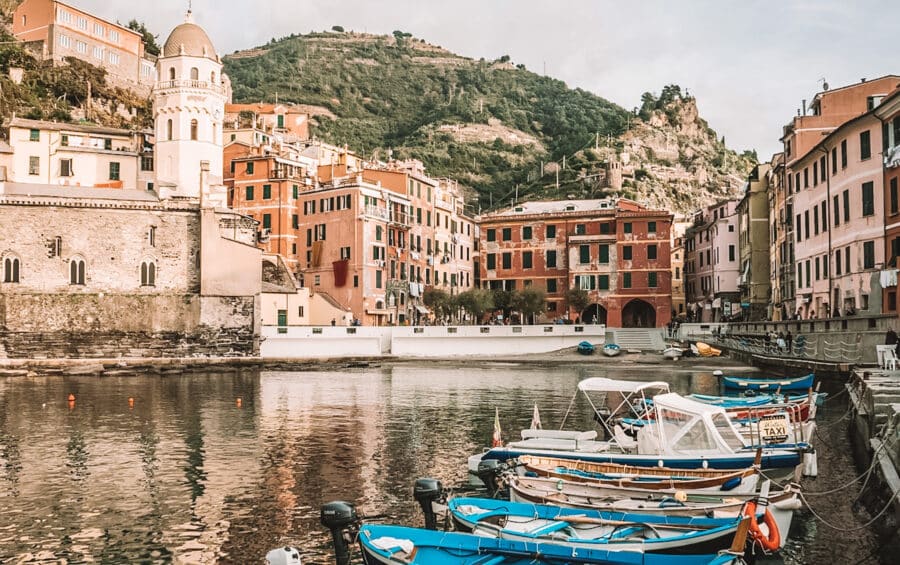
Top Places to Visit
- Rome
- Florence
- Tuscany
- Venice
- Amalfi Coast
- Cinque Terre
- Lake Como
- Sicily
- Capri
- Naples
- Puglia
- Bologna
- Sardinia
- Pompeii
- Portofino
- Genoa
- The Dolomites
- Verona
PIN IT FOR LATER!
